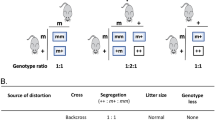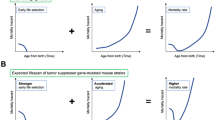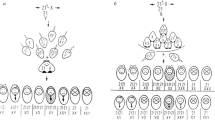Abstract
The lethal ‘t alleles’ of the T complex on mouse chromosome 17 (refs 1, 2) have been assigned to six complementation groups (the definitive classes being t0 , t9 , t12 , tw1 , tw5 , tw73), each causing embryonic death at a particular stage. Intercomplementation heterozygotes (txty) show ‘partial’ complementation, so that only some tyty offspring survive3,4. These survivors appear morphologically normal; indeed the females, being fertile, seem entirely normal. The txty males, however, are sterile. Among the reasons given for this sterility in some txty males are low motility of the txty spermatozoa5, and an inability to effect fertilization either in vitro or in vivo even when already present at the site of fertilization6,7. Spermatozoa from sterile txty males were reported to be apparently present in ‘normal’ numbers in the uterus, although actual ejaculate numbers have not been quoted for these, or indeed for normal fertile males5–8. In the human, typical ejaculate counts of less than 20 × 106 spermatozoa, where the normal ejaculate contains 100–250 × 106, are judged to indicate clinical sterility9. The comparison of numbers of spermatozoa10 ejaculated into the female tract by sterile t6tw5 , t6tw32 and tw5tw32 (all ‘strong’ mutations2) and control mice clearly shows an even greater oligozoospermia (about 100 times less than controls) occurring in the txty males.
This is a preview of subscription content, access via your institution
Access options
Subscribe to this journal
Receive 51 print issues and online access
$199.00 per year
only $3.90 per issue
Buy this article
- Purchase on Springer Link
- Instant access to full article PDF
Prices may be subject to local taxes which are calculated during checkout
Similar content being viewed by others
References
Bennett, D. Cell 6, 441–454 (1975).
Sherman, M. I. & Wudl, L. R. in Concepts in Mammalian Embryogenesis (ed. Sherman, M. I.) 136–234 (MIT Press, Cambridge, 1977).
Silagi, S. Devl Biol. 5, 35–67 (1962).
Bennett, D. Science 144, 263–267 (1964).
Bennett, D. & Dunn, L. C. J. reprod. Fert. 13, 421–428 (1967).
Mcgrath, J. & Hillman, N. J. Cell Biol. 75, Abstr. G689 (1977).
Olds, P. J. J. exp. Zool. 177, 417–434 (1971).
Olds, P. J. J. Biol. Reprod. 2, 91–97 (1970).
Freund, M. & Peterson, R. N. in Human Semen and Fertility Regulation in Men (ed. Hafez, E. S. E.) 344–354 (Mosby, St Louis, 1976).
Cohen, J. Adv. comp. Physiol., Biochem. 4, 267–380 (1971).
Wells, M. E. & Awa, O. A. J. Dairy Sci. 53, 227–232 (1970).
Cohen, J. Nature 215, 862–863 (1967).
Gates, A. H. in Methods in Mammalian Embryology (ed. Daniel, J. C.) 64–75 (Freeman, San Francisco, 1971).
Snyder, R. L. Anat. Rec. 155, 11–14 (1966).
Singer, R. et al. Experimentia 36, 578–579 (1980).
Yanagisawa, K. et al. Immunogenetics 1, 57–67 (1974).
Archer, J. R. et al. Genet. Res., Camb. 32, 79–84 (1978).
Bryson, V. J. Morphol. 74, 131–179 (1944).
Author information
Authors and Affiliations
Rights and permissions
About this article
Cite this article
Tucker, M. Explanation of sterility in txty male mice. Nature 288, 367–368 (1980). https://doi.org/10.1038/288367a0
Received:
Accepted:
Issue Date:
DOI: https://doi.org/10.1038/288367a0
Comments
By submitting a comment you agree to abide by our Terms and Community Guidelines. If you find something abusive or that does not comply with our terms or guidelines please flag it as inappropriate.



